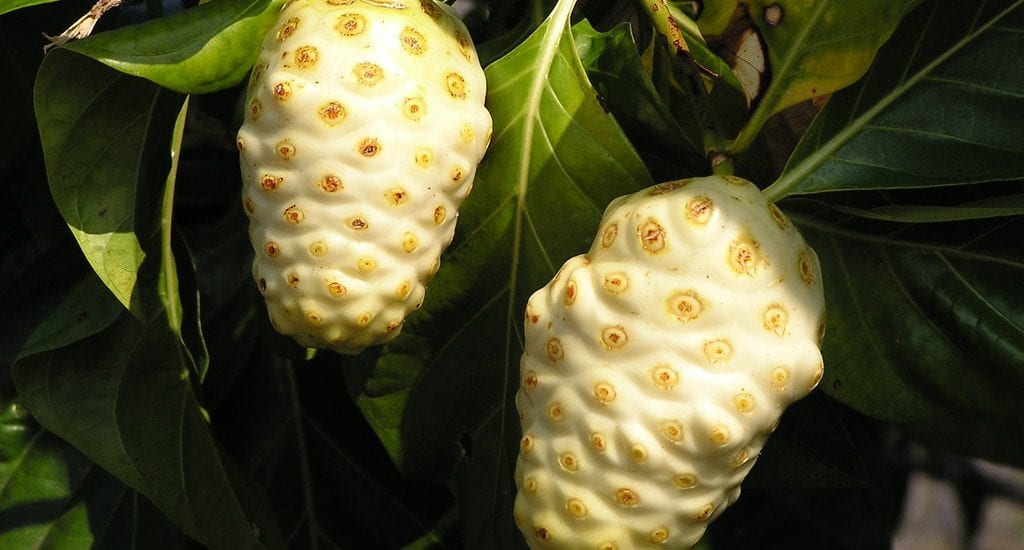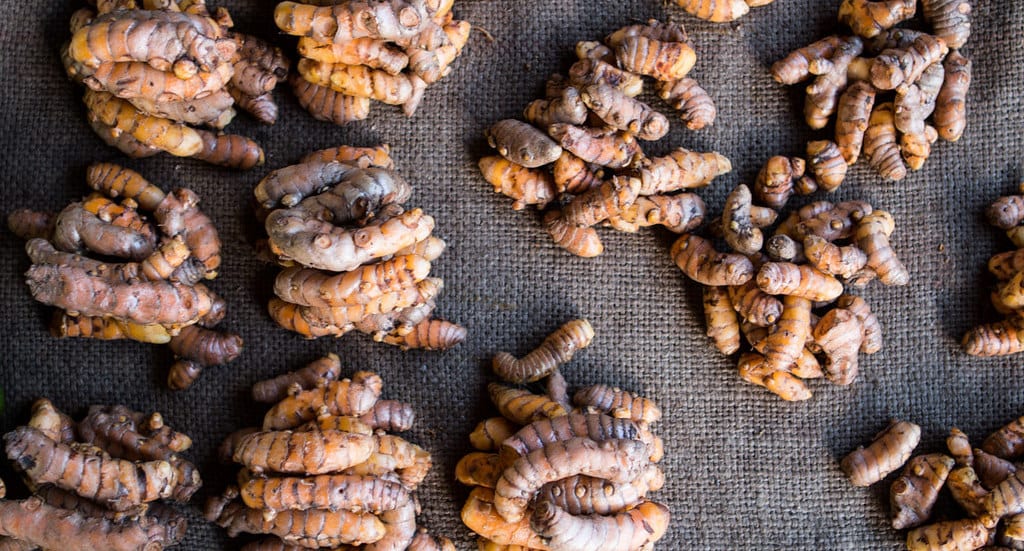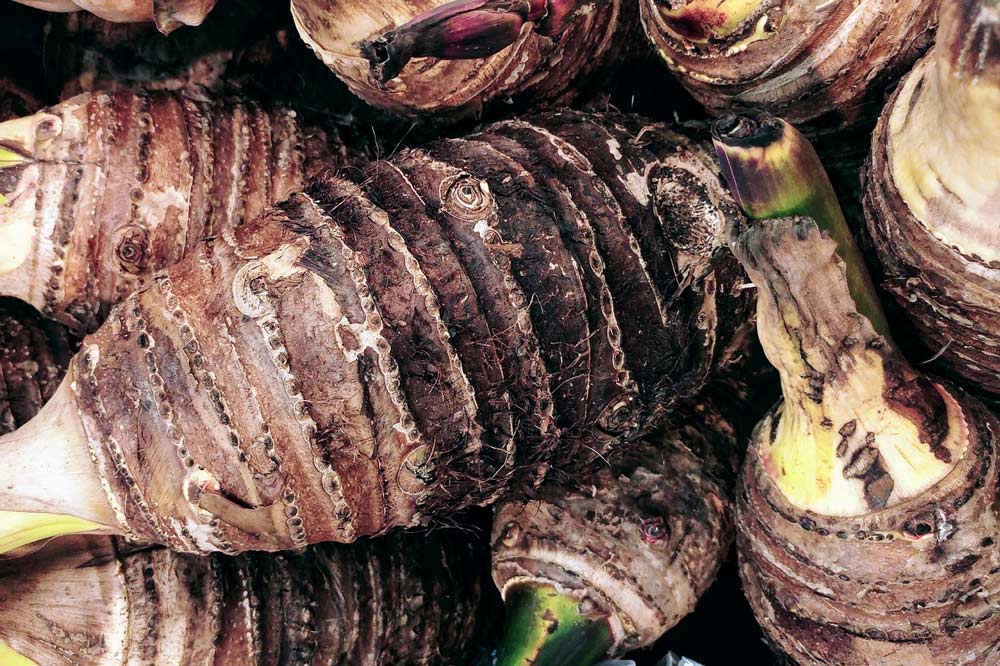1.) Noni (Morinda citrifolia)
As far as medicinal Hawaiian plants go, this one is iconic. Known as Indian mulberry, beach mulberry, and cheese fruit, the noni plant is a fruit-bearing tree that is hardy enough to survive near beaches, on lava rock, and through drought, which makes it perfectly at home in the many different climates of the Big Island. Noni is known for its fruit, which are produced year round—the noni berry. It’s potato-sized, off-white, oblong, and its foremost feature is its incredibly strong smell that many liken to the fragrance of strong cheese or rot. Despite the odor, this was a very important medicinal plant for Hawaiians, who brought this plant on their voyage from the South Pacific. Noni has been used for millennia as a tonic for gastrointestinal ailments and it is also claimed to alleviate arthritic joint pain, improve skin quality, prevent cancer, reduce stress, boost immunity, and treat fever.

2.) Kī (Cordyline fruticosa)
Also known as ti leaf, in the world of medicinal Hawaiian plants, this is the “good luck” plant. Ti leaf is one of the most prosperous plants growing on Hawaiʻi Island—almost everyone has at least one or two growing in their yard. This hardy plant was brought over via canoe for its multitude of handy uses. Its leaves were used for utilitarian purposes; to make skirts, thatch roofs, and to wrap and store food. Kī is also used for a number of medicinal and spiritual purposes. The plant itself is believed to ward off spirits, and was traditionally used in ceremonies. While parts of the root and shoots can be turned into a tea to drink, the leaves itself are used to alleviate fever. An inflicted person would lie on a cool bed of ti leaves, which are said to draw out the heat.

3.) ʻAwa (Piper methysticum)
Also known as kava or kava-kava, the ʻawa plant is part of the pepper family. It was brought to Hawaiʻi by Polynesian voyagers, and kava drinking has been part of prestigious ceremonial occasions since ancient times throughout the South Pacific. There are approximately 13 unique varieties now found in Hawaiʻi. Some of the most popular strains are Mahakea and Mo’i, which were considered so sacred in pre-colonial times that no one but royalty, or Aliʻi, could ever experiece them. Another variety, Hiwa, was offered to hula deities in return for knowledge and inspiration.
Different parts of the ʻawa plant can be used to treat a myriad of ailments, although it is the root which makes it well known. The root is ground up and strained into a juice, which is consumed for its relaxing effect. Traditionally it was used to treat anxiety, stress, and to relax muscles, but it has more recently become popular as a social drink. Supposedly, this calming effect can be appreciated without intoxication, and allows for inner peace while socializing making it a go-to among medicinal Hawaiian plants.

4.) ʻŌlena (Curcuma domestica)
ʻŌlena, also known as turmeric, has, for centuries, been used around the world for its medicinal qualities. It was widely used throughout Polynesia as well. ʻŌlena is part of the ginger family, and grows best in rainy jungles and forests. This plant’s rhizome, or thick rootstock, was used as the base of a juice to cure sinus ailments and inflammation. The bright goldenrod root was also used as a dye for traditional kapa cloth; and part of its name comes from the Hawaiian word for yellow, or lena. Becareful! These medicinal Hawaiian plants can stain your fingers and countertops,

5.) Māmaki (Pipturus albidus)
Māmaki is a plant that’s indigenous to Hawaiʻi—meaning that it can be found nowhere else on Earth. These medicinal Hawaiian plants are a member of the nettle family, and grow as trees, which offered Ancient Hawaiians valuable construction materials like wood and fiber for rope. Its small fruit were used in a salve to treat cuts and injuries, and the bark was believed to hold special power. Today, it is the leaves of the māmaki that are still used to make a refreshing drink with enjoyable fragrance. Fresh leaves are picked and dried, and processed into an “invigorating” tea, which is said to lower blood pressure, lower cholesterol, and cleanse toxins from the blood.

For more articles like this one, click here to check our Local Kine section!























